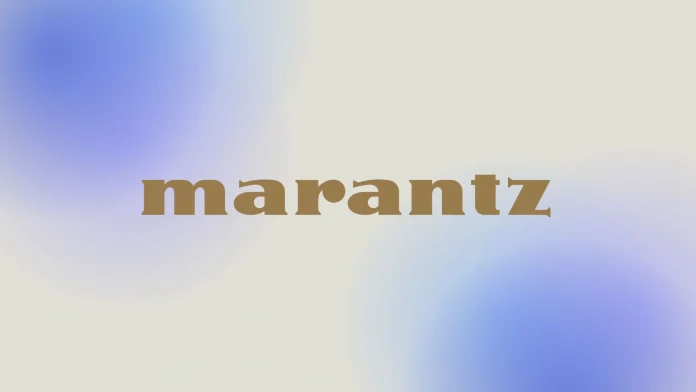Marantz, synonymous with premium audio equipment, traces its roots back to 1953 in Kew Gardens, New York, marking its inception as an American company. Its journey through time is marked by a series of ownership transitions and the division into distinct branches.
Presently, Marantz calls California its home, operating under the wing of an American entity dedicated to crafting audio equipment. A larger conglomerate with interests in the production of medical audio devices further encompasses this parent company. To fully grasp Marantz’s current standing, it’s essential to explore the layered ownership structure that defines who truly holds the reins of this iconic brand.
Who owns Marantz nowadays?
To directly address the main inquiry, Marantz and its brand currently fall under the D+M Group, which Sound United LLC holds. This American conglomerate serves as a parent entity to numerous brands, with a primary focus on the production of consumer audio equipment. Formerly recognized as DEI Holdings, its portfolio includes other notable brands like Denon and Boston Acoustics.
The year 2022 marked a significant development when Sound United LLC was acquired by Masimo. Consequently, Masimo, a company rooted in California and known for its medical electronic devices, now indirectly owns Marantz. This acquisition allowed Masimo to broaden its manufacturing horizons and venture into the realm of health-focused wearable technology.
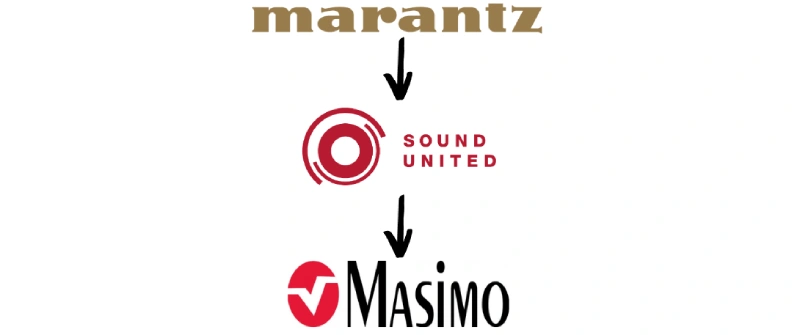
This outline clarifies Marantz’s ownership landscape, affirming its status as an American brand under the stewardship of domestic companies. For those concerned about the origin of Marantz’s products, they remain firmly within the American manufacturing ecosystem. Yet, the narrative extends further, particularly with the existence of Marantz Professional, a distinct entity within the broader Marantz brand.
Who owns Marantz Professionals?
In a notable move back in April 2014, the D+M Group, which then held Marantz, divested the Marantz Professional division to inMusic. This American entity, inMusic, acts as the umbrella company for a diverse range of brands. It’s known for its extensive portfolio in the music and audio industry, catering to DJs, music production, live sound, musical instruments, professional audio, software, stage lighting, and even consumer electronics. With its headquarters situated on the East Coast in Cumberland, Rhode Island, inMusic also operates through local offices globally.
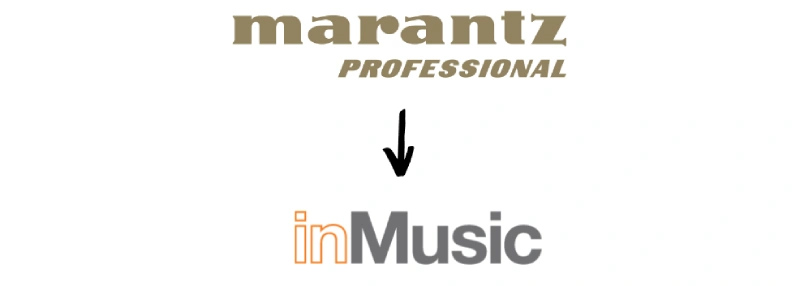
As a result of this transition, Marantz Professional now operates under the inMusic banner, dedicating its focus to the development of professional-grade equipment. On the other hand, the consumer-oriented Marantz products remain under the purview of Sound United LLC, which, in turn, is a subsidiary of Masimo. This distinction might seem intricate at first glance, so I’ve laid it out to help clarify. It’s crucial to recognize that while Marantz and Marantz Professional share a common heritage, they are currently steered by separate corporate entities, with the former focusing on consumer electronics and the latter on professional audio solutions, following the split from their original unified structure.
History of Marantz mergers and acquisitions
Marantz’s history is marked by a series of ownership transitions since its inception. It all started in 1953 when Saul Marantz founded the company in Kew Gardens, New York, establishing it as an independent entity.
The narrative took its first major turn in 1964 when Superscope Inc. acquired Marantz. Initially, manufacturing remained in the US, but in 1966, a pivotal agreement with Standard Radio Corp shifted the primary production facilities to Japan. This partnership deepened to the extent that, by 1975, Standard Radio Corp adopted the name Marantz Japan Inc, continuing its collaboration with the original Marantz entity.
The ownership saga continued in 1980 when Superscope decided to sell the Marantz brand along with its dealer network outside of the USA and Canada to Philips Electronics. This move was further solidified in 1992 when Philips also took over the U.S. and Canada trademarks and dealer networks, positioning itself as the sole proprietor of Marantz, thus marking another key chapter in the brand’s complex history.
In 2001, Marantz Japan Inc., previously known as Standard Radio Corp, made a significant move by reacquiring the Marantz brand along with its international sales subsidiaries from Philips. The following year, 2002, marked a pivotal merger between Marantz Japan and Denon, culminating in the formation of D&M Holdings, also referred to as the D+M Group. By 2008, this entity had successfully acquired all the remaining shares from Philips, consolidating its ownership.
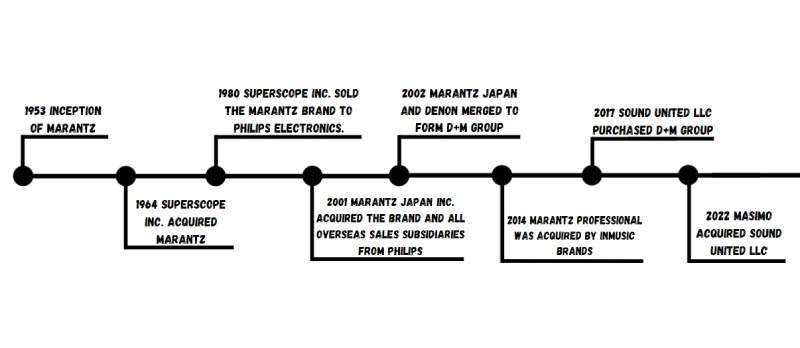
The landscape shifted again in 2014 when the D+M Group decided to divest the Marantz Professional division, selling it to inMusic Brands and choosing to focus on the consumer electronics segment. A few years later, in 2017, another significant change occurred when Sound United LLC acquired the D+M Group, bringing the Marantz brand under its umbrella, where it remains to this day.
To provide a clear overview, let’s recap the key milestones in the ownership history of Marantz:
- 1953: The inception of Marantz, established as an independent entity.
- 1964: The acquisition of Marantz by Superscope Inc.
- 1975: The transformation of Standard Radio Corp into Marantz Japan Inc.
- 1980: The sale of the Marantz brand from Superscope Inc to Philips Electronics.
- 2001: The reacquisition of Marantz, along with its international sales divisions, by Marantz Japan Inc from Philips.
- 2002: The merger between Marantz Japan and Denon, leading to the creation of the D+M Group.
- 2014: The divestiture of Marantz Professional to inMusic Brands.
- 2017: The acquisition of the D+M Group by Sound United LLC.
- 2022: The takeover of Sound United LLC by Masimo.
What is D+M Group?
To address another potential query: What exactly is the D+M Group? This entity is a Japanese corporation established in 2002, born from the merger of Denon and Marantz, hence the ‘D+M’. Sometimes referred to as DMGlobal or D&M Holdings, this group isn’t limited to just Denon and Marantz; it encompasses a variety of smaller companies under its wing.
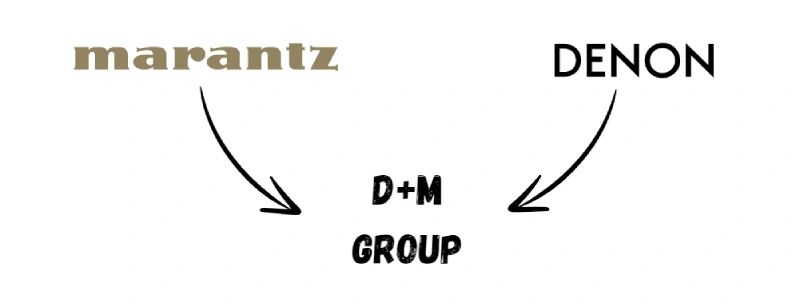
Notable among these are McIntosh and Boston Acoustics, which are also integral parts of the D+M Group. As of now, D+M Group, along with all its associated brands, falls under the ownership of Sound United LLC.

